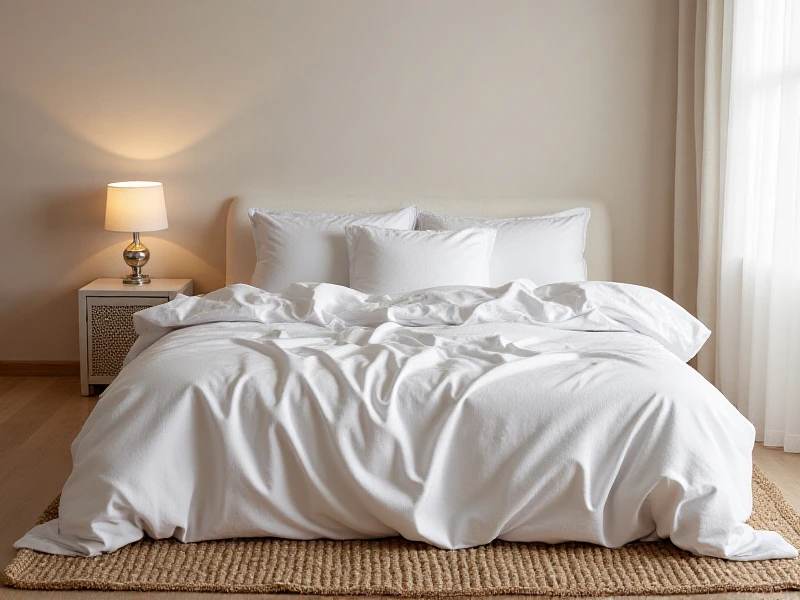10 Insider Tips to Choose the Best Pillowcase for Healthier Skin and Deeper Sleep
2025-06-04

Pillowcases might seem like a simple bedding item, but they play a crucial role in your nightly comfort and overall health. A good pillowcase can prevent acne, reduce hair breakage, and improve sleep quality, while a poor choice may cause allergies or overheating. Whether you're upgrading your bedroom or seeking skin-friendly solutions, this guide reveals practical insights for selecting the perfect pillowcase.
1. Fabric Matters Most
Silk pillowcases, particularly mulberry silk, reduce friction against skin and hair. This minimizes wrinkles and prevents split ends. For hot sleepers, bamboo-derived rayon offers breathable cooling with natural moisture-wicking. Classic cotton remains popular—choose long-staple Egyptian or Pima cotton for superior softness and durability. Avoid synthetic blends like polyester, which trap heat and may irritate skin.
2. Thread Count Myths Debunked
A high thread count doesn't automatically mean luxury. Thread count refers to threads per square inch, with 200–400 being optimal for balance. Higher counts (600 ) often use thinner, weaker threads or artificial coatings that wear quickly. Focus instead on material quality and weave—percale weaves feel crisp and cool, while sateen offers silky smoothness.
3. Size and Fit Fundamentals
Standard, queen, and king pillowcases vary, so measure your pillow before buying. A snug fit prevents slipping during sleep. Consider envelope closures or zippered designs to keep pillows secure. For adjustable pillows, select pillowcases with deep pockets—at least 20 inches—to avoid gaps.
4. Hypoallergenic Properties
Dust mites and bacteria thrive in pillows. Anti-microbial fabrics like bamboo or Tencel resist allergens naturally. Wash pillowcases weekly in hot water (130°F ) to eliminate buildup. Those with sensitive skin should seek OEKO-TEX-certified options to avoid chemical irritants.
5. Cooling Tech for Night Sweats
Phase-change materials absorb body heat, releasing it gradually. Copper-infused pillowcases enhance this effect while adding antibacterial benefits. For budget-friendly cooling, percale cotton promotes airflow—ideal for summer months.
6. Care Rituals for Longevity
Always check care labels. Silk pillowcases require gentle, cold-water cycles and air-drying to maintain their coating. Cotton and bamboo tolerate machine drying on low, but skip fabric softeners—they clog fibers. Iron silk while damp; cotton can handle higher heat.
7. Eco-Conscious Choices
Opt for organic cotton or OEKO-TEX-certified materials to avoid pesticides and toxins. Bamboo is sustainable but ensure it’s labeled "mechanically processed" to bypass harsh chemical treatments.
8. Color and Aesthetic Harmony
Light-colored pillowcases reveal stains quickly, signaling when to wash. Dark tones hide wear but fade faster with frequent washing. Neutral shades like ivory or gray complement any decor and simplify styling.
9. Skin-Repair Benefits
Dry or acne-prone skin benefits from silk pillowcases that retain facial moisture overnight. Their smooth texture reduces irritation, while copper variants may boost collagen production. Rotate pillowcases every other day to prevent oil and sweat buildup.
10. Pairing With Pillow Types
Memory foam and latex pillows require stretchy pillowcases to fit without compressing the cushion. Down pillows pair best with tightly woven cotton to prevent feather leakage. Always coordinate pillowcase depth with pillow thickness—shallow cases will rip at the seams.
Investing in the right pillowcase transforms ordinary rest into restorative sleep. Experiment with materials and textures—silk for skincare, linen for breathability, or organic cotton for eco-wins. Replace pillowcases every 1–2 years as fibers degrade, and enjoy the ripple effects: fewer allergies, smoother skin, and mornings where you wake up truly refreshed.
Category: